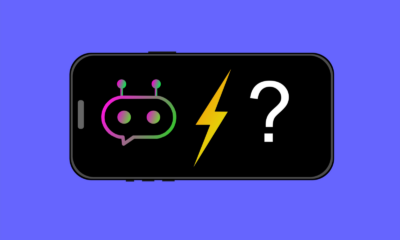TECHNOLOGY
What Are The Differences & Similarities?

User interface (UI) design is all about how the product’s interface looks and functions, while user experience (UX) design is all about the overall feel of the experience.
A few well-known debates in the design world are never quite settled.
One such significant debate is the difference between UI vs UX design. While countless analogies explain how these two concepts work hand in hand, presenting a definitive answer has been challenging. But if you’re new to the design world, understanding how and when to use these terms is essential.
In this article, you’ll learn all there is to know about UI and UX design, from their definitions to the key differences and how they fit together.
What is UI vs UX Design?

UI refers to the term “User Interface” design, while UX stands for “User Experience.” Both these design concepts are crucial to a product and work closely together. However, despite their professional relationship, their roles are quite different. They refer to various aspects of the design discipline and product development process. But before we jump to the difference between UI and UX design, let’s understand what each term means individually.
What is UI Design?
User Interface (UI) design is all about creating interfaces with the sole focus on graphic representation and user interactivity. The goal is to build an interface that is easy to use and aesthetically pleasing. The word “interface” is the access point where a user interacts with software or application, a website, or a digital device.
UI design is about exploring the ways of interaction and behavior of the users with a product to create an interface that best adapts to their needs. It mainly involves taking note of the design elements involved in creating a product, for example, images and other media, graphics, buttons, menu bars, or footers. These elements affect the users’ interaction with the application, so it should be planned accordingly. It is a must to ensure that every visual element feels united, both aesthetically and in purpose.
You can check out some great UI design examples here.
What is UX Design?
User Experience (UX) design is the process of creating products that deliver valuable experiences to the users. User Experience includes all aspects of the users’ interaction with the brand, its services, and its products. User Experience determines how the application operates and how easy or difficult it is for the users to interact with the final product.
UX design involves creating meaningful experiences through the integration of various elements of marketing, branding, engineering, design, and usability into a product. Designing a user experience requires extensive user research to understand the users’ sentiments, mindset, behavior, and goals. This information is then used to build the product.
For a better understanding, check out some awesome UX design examples here.
The Key Differences Between UI and UX Design
While the design concepts work closely, there are some major differences between UI and UX design. Let’s understand them with help of the tasks involved while designing a UI and UX.
Tasks Involved in UI Design
1. Look and Feel of the Product
-
Design Research: Research is vital to gather information about the users’, competitors’, and the latest design trends, help find inspiration, and create interfaces that meet user expectations.
-
Design Visuals: Designing the visuals involves creating a product layout using all the visual elements, including colors, fonts, icons, buttons, and more.
-
Graphic Development: It is essential to strike the right balance between usability and consistent brand identity, which can be established by working hand in hand with the marketing or creative team. Therefore, UI design is closely related to graphic design.
-
Design Systems: While designing a UI, ensuring product and brand consistency is crucial. In that case, style guides, libraries, and components that detail how each element should look help a ton.
2. Responsive and Interactive Design
-
Responsiveness: UI design helps create responsive interfaces that adjust smoothly to all devices, platforms, and screen sizes, be it form or functioning.
-
Interactivity: UI design involves determining which animations and transitions or other interactive elements to use for an interactive interface.
-
Prototyping: A prototype is an essential part of UI design. It showcases every UI element and its interaction in real-time. It helps test how the product will finally look, feel and work.
Tasks Involved in UX Design
1. Research and Strategy
-
Planning: The first step in the UX design process is to create a strategic plan and then ensure that all the critical stakeholders approve and work towards common goals.
-
User Research: UX design is concerned chiefly with conceptual problem-solving based on user research and data.
-
Information Architecture: IA involves organizing and labeling the content of the product to help users find the information they’re looking for.
2. Prototyping and Wireframing
-
User Flow: UX design involves interviewing users to note their needs, then drawing up the best user flow to help them complete their tasks.
-
Wireframing: Wireframing is essential for the UX design process. It acts as the skeleton of an interface to understand how a design will function.
-
Testing: It is best to do early testing in the design process through a rough prototype or even a paper mockup to gather data from users and validate your ideas and assumptions.
-
Analysis: UX design involves analyzing the test results and defining the next steps based on the results.
How Do UI and UX Design Work Together?
User Interface and User Experience cannot be considered entirely separate entities despite the differences. On the contrary, both design concepts are crucial and work closely together to find out how a product will look and function, with one influencing the other.
No matter how attractive an interface you create, users will get frustrated and leave your site without a strong UX because they can’t easily find the information on your application. On the other side, imagine you conduct user research and test your application to ensure an optimal user experience. However, the colors are too bright, and the text is so dull and light for the people to read. Result? Even with a good UX, users might get disappointed if the UI design isn’t pleasing or accessible.
Conclusion
Now that you know the difference between UI and UX design, you can say that there is no UI without UX and vice versa. Because when developing a user-centric product, you need both aspects to ensure users interact with your product with ease and pleasure.
Source link
TECHNOLOGY
Next-gen chips, Amazon Q, and speedy S3

AWS re:Invent, which has been taking place from November 27 and runs to December 1, has had its usual plethora of announcements: a total of 21 at time of print.
Perhaps not surprisingly, given the huge potential impact of generative AI – ChatGPT officially turns one year old today – a lot of focus has been on the AI side for AWS’ announcements, including a major partnership inked with NVIDIA across infrastructure, software, and services.
Yet there has been plenty more announced at the Las Vegas jamboree besides. Here, CloudTech rounds up the best of the rest:
Next-generation chips
This was the other major AI-focused announcement at re:Invent: the launch of two new chips, AWS Graviton4 and AWS Trainium2, for training and running AI and machine learning (ML) models, among other customer workloads. Graviton4 shapes up against its predecessor with 30% better compute performance, 50% more cores and 75% more memory bandwidth, while Trainium2 delivers up to four times faster training than before and will be able to be deployed in EC2 UltraClusters of up to 100,000 chips.
The EC2 UltraClusters are designed to ‘deliver the highest performance, most energy efficient AI model training infrastructure in the cloud’, as AWS puts it. With it, customers will be able to train large language models in ‘a fraction of the time’, as well as double energy efficiency.
As ever, AWS offers customers who are already utilising these tools. Databricks, Epic and SAP are among the companies cited as using the new AWS-designed chips.
Zero-ETL integrations
AWS announced new Amazon Aurora PostgreSQL, Amazon DynamoDB, and Amazon Relational Database Services (Amazon RDS) for MySQL integrations with Amazon Redshift, AWS’ cloud data warehouse. The zero-ETL integrations – eliminating the need to build ETL (extract, transform, load) data pipelines – make it easier to connect and analyse transactional data across various relational and non-relational databases in Amazon Redshift.
A simple example of how zero-ETL functions can be seen is in a hypothetical company which stores transactional data – time of transaction, items bought, where the transaction occurred – in a relational database, but use another analytics tool to analyse data in a non-relational database. To connect it all up, companies would previously have to construct ETL data pipelines which are a time and money sink.
The latest integrations “build on AWS’s zero-ETL foundation… so customers can quickly and easily connect all of their data, no matter where it lives,” the company said.
Amazon S3 Express One Zone
AWS announced the general availability of Amazon S3 Express One Zone, a new storage class purpose-built for customers’ most frequently-accessed data. Data access speed is up to 10 times faster and request costs up to 50% lower than standard S3. Companies can also opt to collocate their Amazon S3 Express One Zone data in the same availability zone as their compute resources.
Companies and partners who are using Amazon S3 Express One Zone include ChaosSearch, Cloudera, and Pinterest.
Amazon Q
A new product, and an interesting pivot, again with generative AI at its core. Amazon Q was announced as a ‘new type of generative AI-powered assistant’ which can be tailored to a customer’s business. “Customers can get fast, relevant answers to pressing questions, generate content, and take actions – all informed by a customer’s information repositories, code, and enterprise systems,” AWS added. The service also can assist companies building on AWS, as well as companies using AWS applications for business intelligence, contact centres, and supply chain management.
Customers cited as early adopters include Accenture, BMW and Wunderkind.
Want to learn more about cybersecurity and the cloud from industry leaders? Check out Cyber Security & Cloud Expo taking place in Amsterdam, California, and London. Explore other upcoming enterprise technology events and webinars powered by TechForge here.
TECHNOLOGY
HCLTech and Cisco create collaborative hybrid workplaces

Digital comms specialist Cisco and global tech firm HCLTech have teamed up to launch Meeting-Rooms-as-a-Service (MRaaS).
Available on a subscription model, this solution modernises legacy meeting rooms and enables users to join meetings from any meeting solution provider using Webex devices.
The MRaaS solution helps enterprises simplify the design, implementation and maintenance of integrated meeting rooms, enabling seamless collaboration for their globally distributed hybrid workforces.
Rakshit Ghura, senior VP and Global head of digital workplace services, HCLTech, said: “MRaaS combines our consulting and managed services expertise with Cisco’s proficiency in Webex devices to change the way employees conceptualise, organise and interact in a collaborative environment for a modern hybrid work model.
“The common vision of our partnership is to elevate the collaboration experience at work and drive productivity through modern meeting rooms.”
Alexandra Zagury, VP of partner managed and as-a-Service Sales at Cisco, said: “Our partnership with HCLTech helps our clients transform their offices through cost-effective managed services that support the ongoing evolution of workspaces.
“As we reimagine the modern office, we are making it easier to support collaboration and productivity among workers, whether they are in the office or elsewhere.”
Cisco’s Webex collaboration devices harness the power of artificial intelligence to offer intuitive, seamless collaboration experiences, enabling meeting rooms with smart features such as meeting zones, intelligent people framing, optimised attendee audio and background noise removal, among others.
Want to learn more about cybersecurity and the cloud from industry leaders? Check out Cyber Security & Cloud Expo taking place in Amsterdam, California, and London. Explore other upcoming enterprise technology events and webinars powered by TechForge here.
TECHNOLOGY
Canonical releases low-touch private cloud MicroCloud

Canonical has announced the general availability of MicroCloud, a low-touch, open source cloud solution. MicroCloud is part of Canonical’s growing cloud infrastructure portfolio.
It is purpose-built for scalable clusters and edge deployments for all types of enterprises. It is designed with simplicity, security and automation in mind, minimising the time and effort to both deploy and maintain it. Conveniently, enterprise support for MicroCloud is offered as part of Canonical’s Ubuntu Pro subscription, with several support tiers available, and priced per node.
MicroClouds are optimised for repeatable and reliable remote deployments. A single command initiates the orchestration and clustering of various components with minimal involvement by the user, resulting in a fully functional cloud within minutes. This simplified deployment process significantly reduces the barrier to entry, putting a production-grade cloud at everyone’s fingertips.
Juan Manuel Ventura, head of architectures & technologies at Spindox, said: “Cloud computing is not only about technology, it’s the beating heart of any modern industrial transformation, driving agility and innovation. Our mission is to provide our customers with the most effective ways to innovate and bring value; having a complexity-free cloud infrastructure is one important piece of that puzzle. With MicroCloud, the focus shifts away from struggling with cloud operations to solving real business challenges” says
In addition to seamless deployment, MicroCloud prioritises security and ease of maintenance. All MicroCloud components are built with strict confinement for increased security, with over-the-air transactional updates that preserve data and roll back on errors automatically. Upgrades to newer versions are handled automatically and without downtime, with the mechanisms to hold or schedule them as needed.
With this approach, MicroCloud caters to both on-premise clouds but also edge deployments at remote locations, allowing organisations to use the same infrastructure primitives and services wherever they are needed. It is suitable for business-in-branch office locations or industrial use inside a factory, as well as distributed locations where the focus is on replicability and unattended operations.
Cedric Gegout, VP of product at Canonical, said: “As data becomes more distributed, the infrastructure has to follow. Cloud computing is now distributed, spanning across data centres, far and near edge computing appliances. MicroCloud is our answer to that.
“By packaging known infrastructure primitives in a portable and unattended way, we are delivering a simpler, more prescriptive cloud experience that makes zero-ops a reality for many Industries.“
MicroCloud’s lightweight architecture makes it usable on both commodity and high-end hardware, with several ways to further reduce its footprint depending on your workload needs. In addition to the standard Ubuntu Server or Desktop, MicroClouds can be run on Ubuntu Core – a lightweight OS optimised for the edge. With Ubuntu Core, MicroClouds are a perfect solution for far-edge locations with limited computing capabilities. Users can choose to run their workloads using Kubernetes or via system containers. System containers based on LXD behave similarly to traditional VMs but consume fewer resources while providing bare-metal performance.
Coupled with Canonical’s Ubuntu Pro + Support subscription, MicroCloud users can benefit from an enterprise-grade open source cloud solution that is fully supported and with better economics. An Ubuntu Pro subscription offers security maintenance for the broadest collection of open-source software available from a single vendor today. It covers over 30k packages with a consistent security maintenance commitment, and additional features such as kernel livepatch, systems management at scale, certified compliance and hardening profiles enabling easy adoption for enterprises. With per-node pricing and no hidden fees, customers can rest assured that their environment is secure and supported without the expensive price tag typically associated with cloud solutions.
Want to learn more about cybersecurity and the cloud from industry leaders? Check out Cyber Security & Cloud Expo taking place in Amsterdam, California, and London. Explore other upcoming enterprise technology events and webinars powered by TechForge here.
-

 WORDPRESS7 days ago
WORDPRESS7 days ago10 WordPress Influencers to Follow in 2024 – WordPress.com News
-

 MARKETING7 days ago
MARKETING7 days agoFeeling Stuck: What to Do When You Don’t Know What to Do
-

 PPC5 days ago
PPC5 days agoA History of Google AdWords and Google Ads: Revolutionizing Digital Advertising & Marketing Since 2000
-

 SEARCHENGINES6 days ago
SEARCHENGINES6 days agoMore Google March 2024 Core Update Ranking Volatility
-

 PPC6 days ago
PPC6 days agoCompetitor Monitoring: 7 ways to keep watch on the competition
-

 WORDPRESS6 days ago
WORDPRESS6 days agoThrive Architect vs Divi vs Elementor
-

 PPC6 days ago
PPC6 days ago31 Ready-to-Go Mother’s Day Messages for Social Media, Email, & More
-

 WORDPRESS5 days ago
WORDPRESS5 days agoTurkish startup ikas attracts $20M for its e-commerce platform designed for small businesses














You must be logged in to post a comment Login